|
The night of the duckling
incident, I read about some unusual sparrows that a fellow named
Roger had seen up at Grant Narrows Park, one of my favorite hangouts.
The birds were in a very easy part of the park to get to, so I
thought that even in my state of recovery I would be able to find
them. I was feeling fairly good, except that I'd get a nasty sharp
pain whenever I twisted my abdomen.
So, fool that I am,
I decided to go see these birds the next day. I quickly discovered
that shoulder-checks and driving in reverse usually involve some
twisting of the abdomen, and of necessity found ways of doing
these operations with more hip-twisting than abdomen-twisting.
As I arrived in Pitt
Meadows, I decided that I would take a short detour down Thompson
Road just to see what was going on there. I was surprised to see
that the tree farm there had Strict Bio-security in effect.
|
|
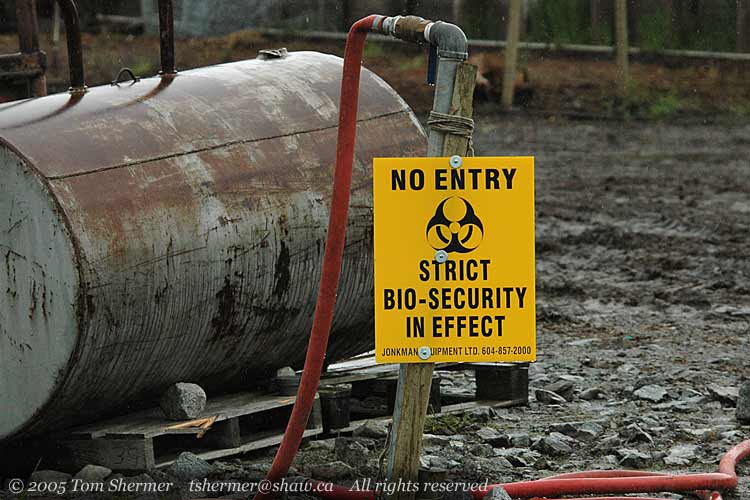 |
|
I wonder what that
really means. Did someone deploy a biological weapon there? Do
they have sentient plants watching over their farm equipment,
to keep people from stealing it? Maybe there are self-destruct
mechanisms built into all of their trees. Is there a plant virus
loose on the farm? Could they have developed a new strain of trees
that they don't want people absconding with? Is there milfoil
loose on the farm, and people should check their pant legs for
it whenever they leave? Or maybe they just sprayed everything
with pesticides and they don't want people taking the tree leaves
and eating them. That's a pretty cryptic sign to me.
Anyhow, behind that
wall of strict bio-security, I did find a couple of tree spades.
A tree spade is an attachment for your heavy machinery used for
digging up and transporting trees. You drive it up to a tree,
close the hinge so that it encircles the tree, and then the (in
this case, four) digging blades are hydraulically driven into
the ground under the tree. Then you hydraulically lift the attachement,
and away you can drive with your tree. These are pretty small
tree spades, and I wouldn't be surprised if they attach to really
light heavy machinery, like a bobcat.
|
|
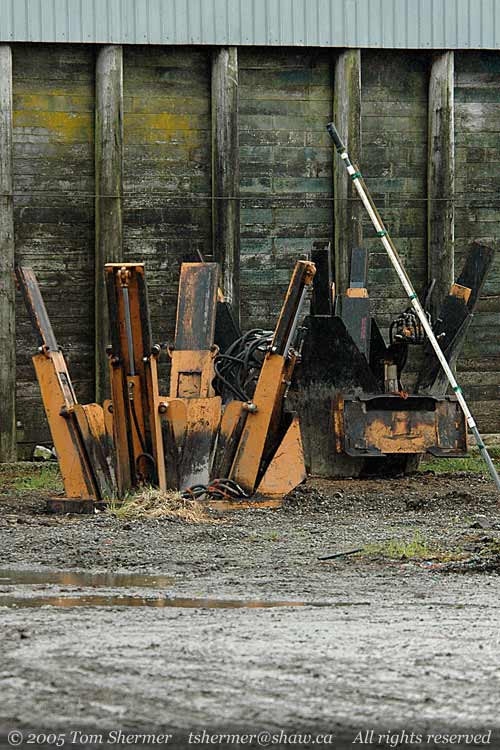 |
|
I really like the idea
of light heavy machinery.
Anyhow, that was it
for Thompson Road. Back on Rannie, headed towards Grant Narrows,
I pulled over beside a field to take a few photos. Bessie here
wasn't too happy with that.
|
|
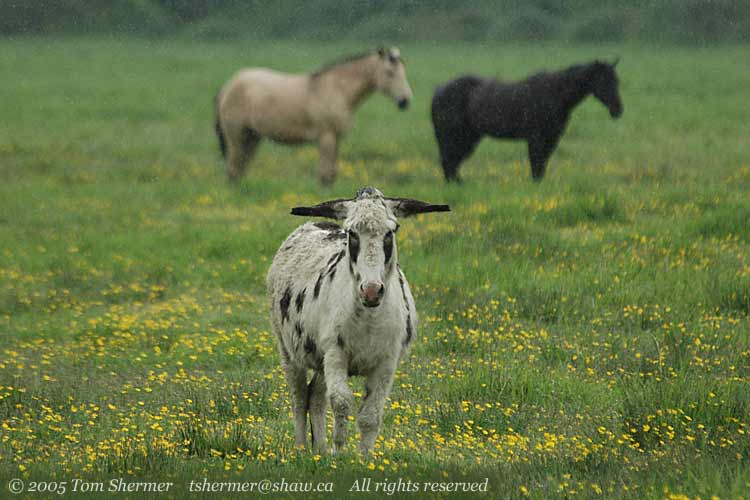 |
| I got to
Grant Narrows with no further stops and decided to walk out to the
observation tower. Along the way, I got some photos of a couple
of Spotted Sandpipers flying around over the water. Here's one of
them. |
|
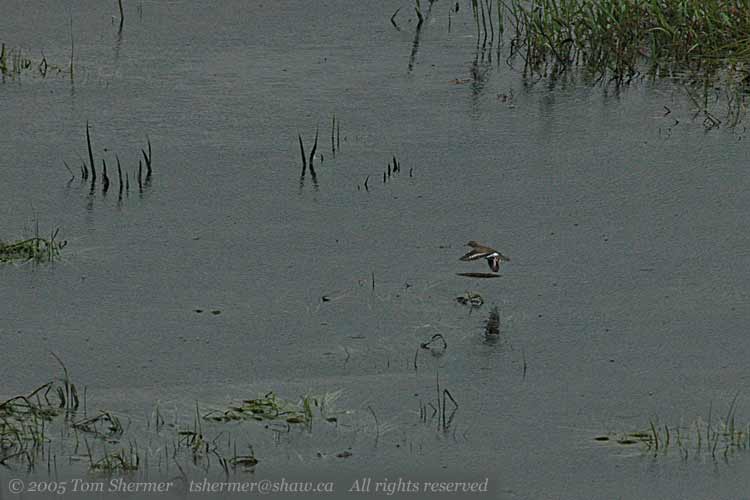 |
|
With those photos,
I discovered that taking photos while walking about was easier
than taking photos while in the car. The photos from the car seat
had involved a lot of twisting in order to point the camera out
the window. I had no such problem once I was out of the car.
Also on the way to
the tower, I saw an Osprey on a dolphin tearing strips off of
a fish.
|
|
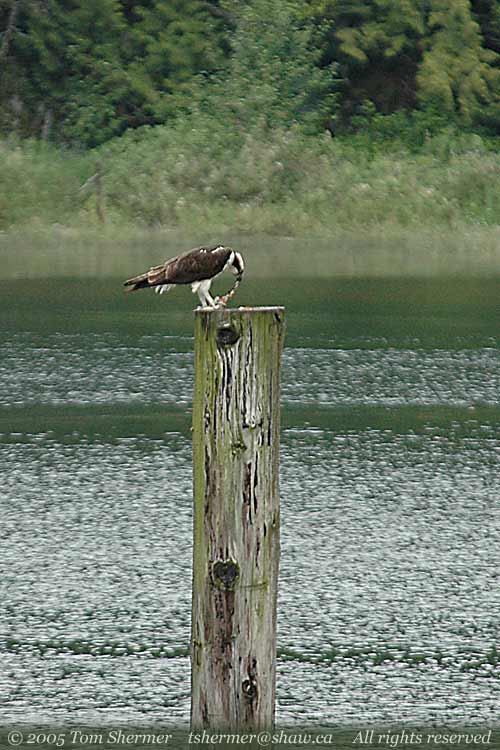 |
|
At the tower, I spoke
with a pair of birders, one was local and the other was from Wales.
The guy from Wales really knew his North American birds, though,
certainly better than I did. As we spoke, a light rain started.
Occassionally the intensity of rain would pick up for a couple
of minutes, and then abate.
Soon the other birders
left the tower, and since I was a little tired I decided to sit.
The only place I could find to sit that was both dry and facing
some good habitat was under the tower. So I sat there and watched
the bushes for a good half hour or so. It was an interesting time,
as many small yellow birds came by to check me out.
Here's the first of
them, an Orange-crowned Warbler. He's got a black line going back
from his billl, and that line breaks up the bright ring that otherwise
circles the eye.
|
|
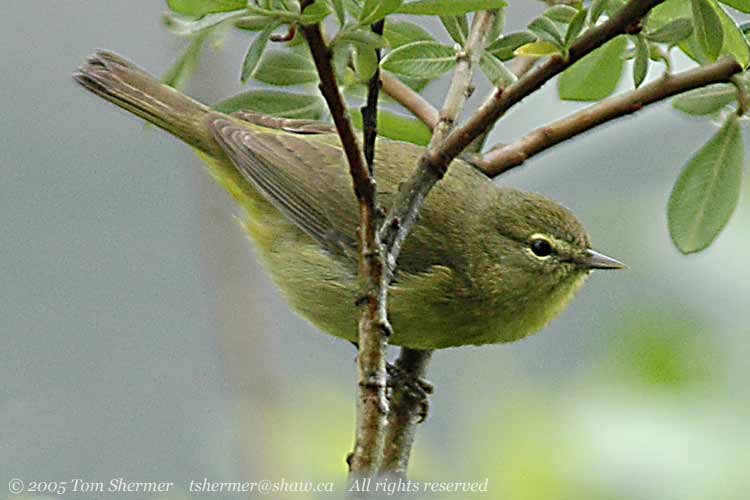 |
| Here's another
of my yellow friends, a Wilson's Warbler, with his yarmulke clearly
visible. |
|
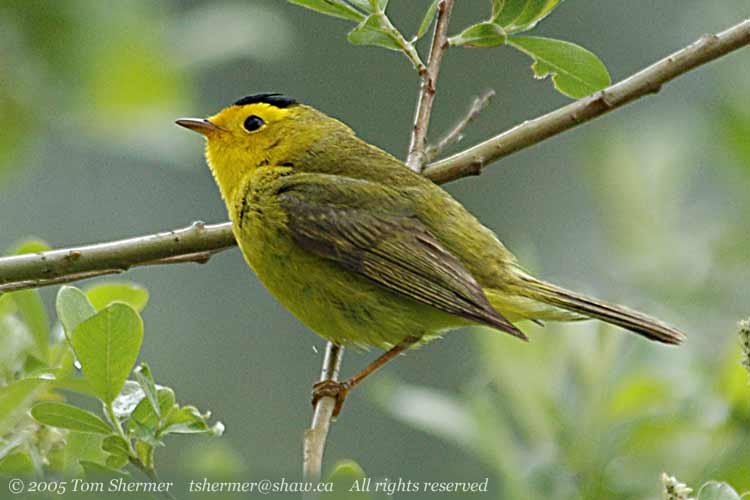 |
| A male
American Goldfinch popped up to the side (ouch! as I twisted). |
|
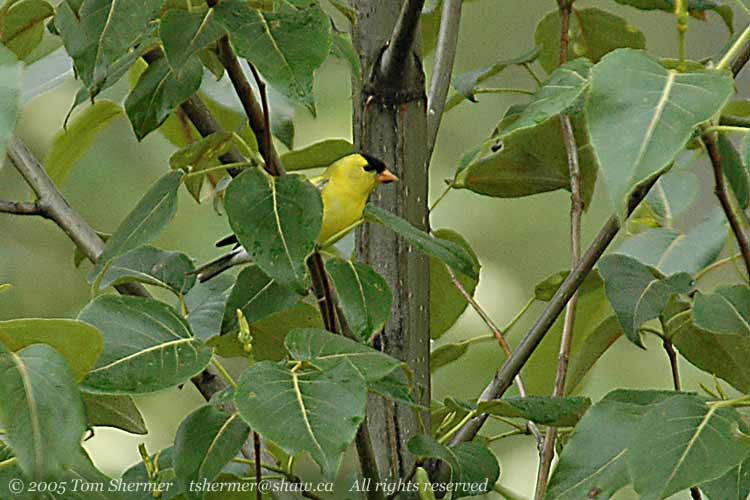 |
| An then
there was this little fellow, who is your standard Yellow Warbler.
|
|
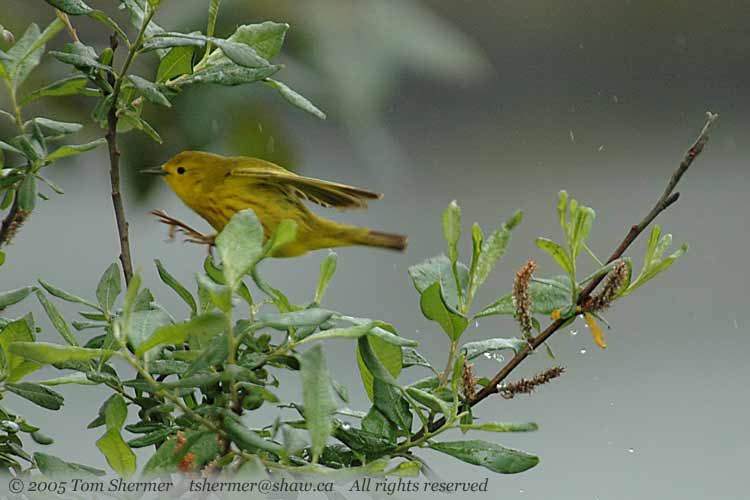 |
| Now, I sitting
there for a while, and was in a bit of a contemplative mood. Sometimes
when I'm like this, nature will speak to me. Like this Yellow Warbler,
who seemed to be saying that sometimes you just need to view life
from a different angle. |
|
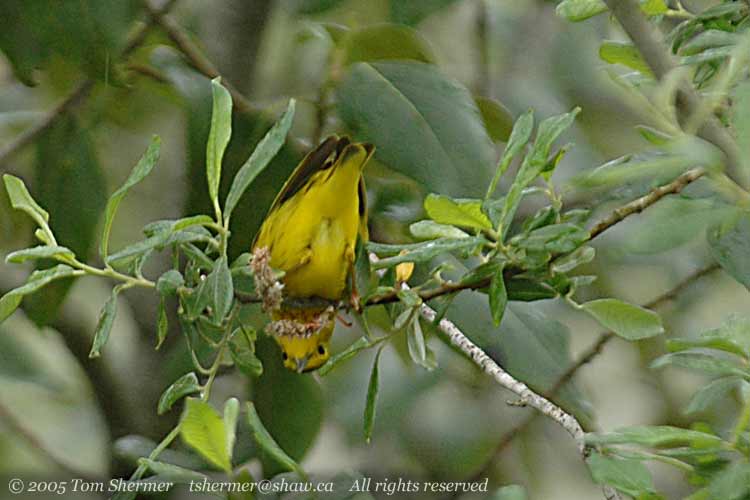 |
|
Well, it was either
that or he was mooning me. I never did figure out which it was.
After my little rest,
I headed back towards where the sparrows had been reported. I
found them in exactly the area where they had been the previous
day, right next to the snack bar across from the boat launch.
When I first got there,
my attention fell to a typical Golden-crowned, so I'll start with
them. This is a textbook breeding-plumaged Golden-crowned Sparrow,
and most guide books have a picture looking a lot like this.
|
|
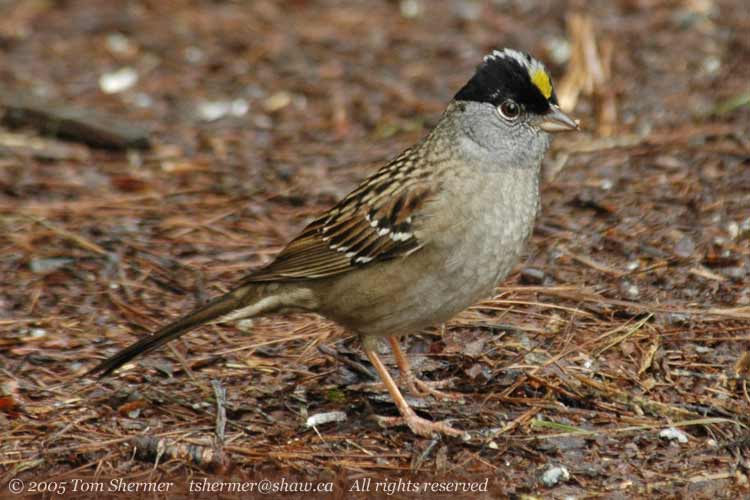 |
| I was looking
for some unusual sparrows, and I asked this fellow if he was one
of them. He shook his head "no". |
|
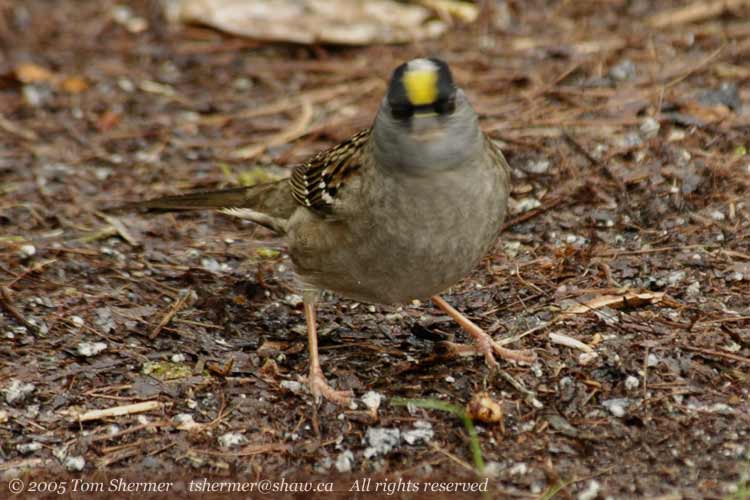 |
| Here's one
of his flockmates, still basically the same but showing a slight
bit more gray on his head. |
|
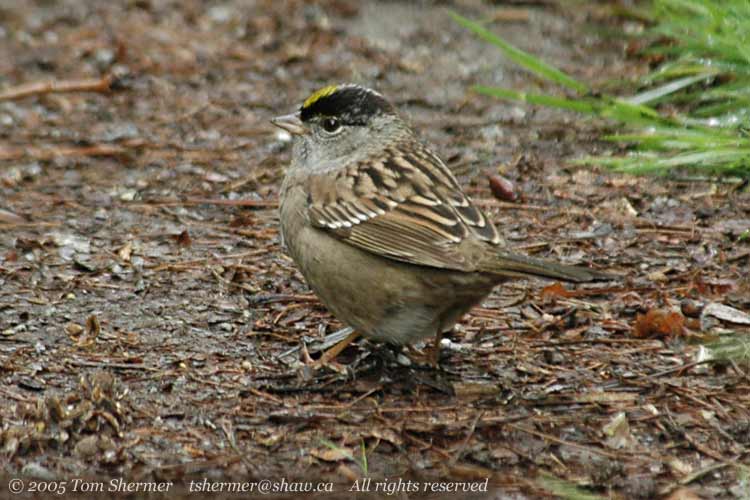 |
| And yet
another sparrow had a little bit of yellow along with the gray near
the eye. |
|
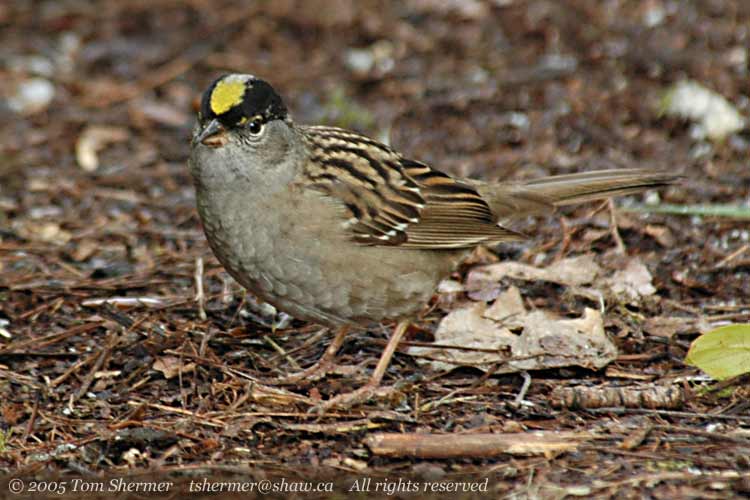 |
|
Now, I'm fairly sure
that all of the birds so far are straight Golden-crowned. (But
I'm just a guy with a camera and an opinion, and nowhere near
an expert opinion, at that. If you are an expert, please let me
know if I've goofed anywhere here.) The birds that I was looking
for weren't straight Golden-crowned, but were hybrids—the
results of a Golden-crowned Sparrow breeding with a White-crowned
Sparrow.
The next three photos
show birds that I'm not sure about. Maybe they are hybrids, but
maybe they are just in transitional plumage. The first two are
of the same individual, who may be the same as in the third photo
above. I lean towards calling this one a straight Golden-crowned.
|
|
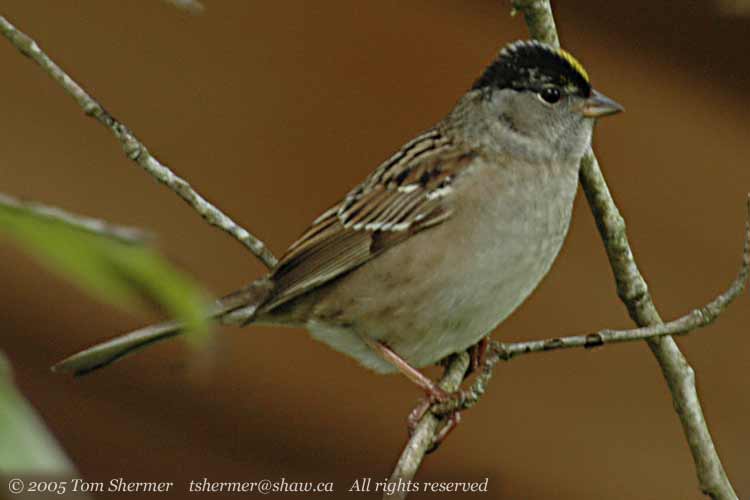 |
| |
|
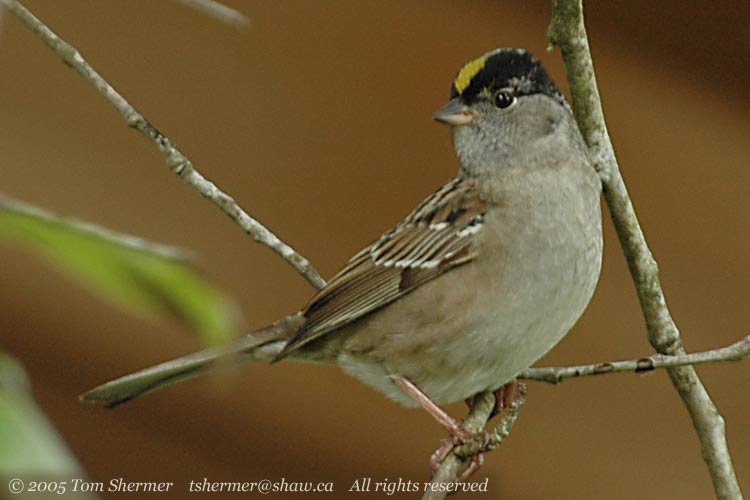 |
| The following
bird is a little more problematic, though, at least in head plumage.
I don't know what to make of him. He could be a late adult non-breeding
plumaged Golden-crowned, but they should have all molted by this
point. Also, the yellow above the eye is unusual. |
|
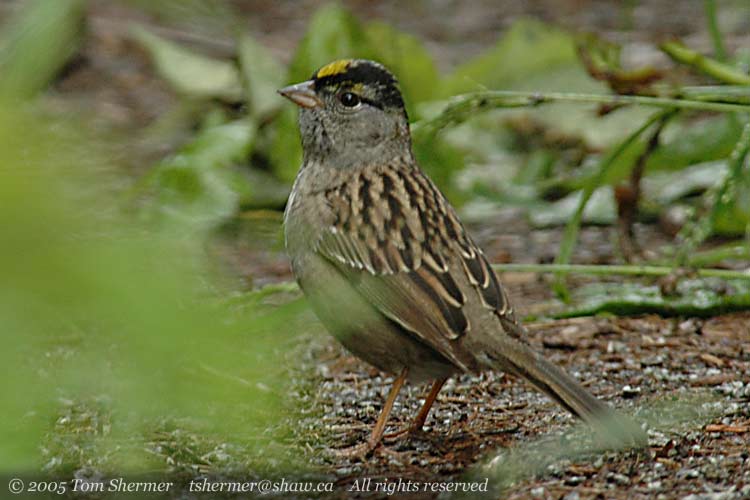 |
| Now, I'm
fairly certain that that bird is a different individual from the
following bird, which is almost certainly a hybrid. This is not
a bird that you'll find in your normal guide book; the black-and-light-colored
stripes look like a White-crowned Sparrow, and the Yellow forecrown
looks like a Golden-crowned. |
|
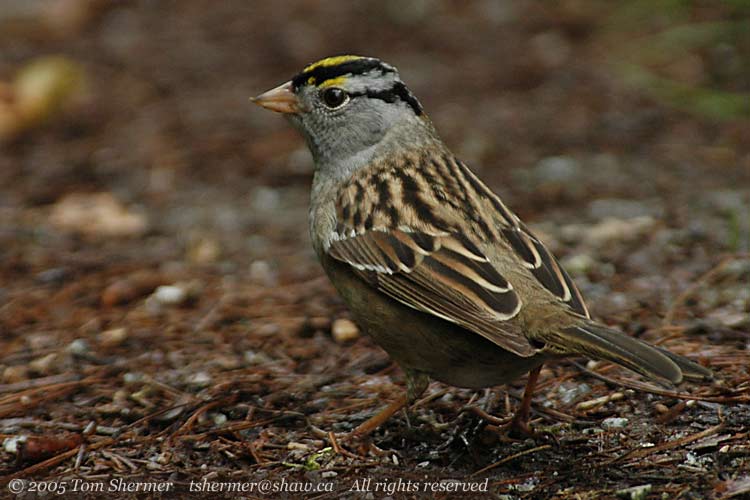 |
|
Okay, I'll confess.
I do have a guide book with a photo of something like this
sparrow, but it's a specialty guide book just on sparrows.
Here's the same individual
shown in the last photo, after he applied a bit of mousse.
|
|
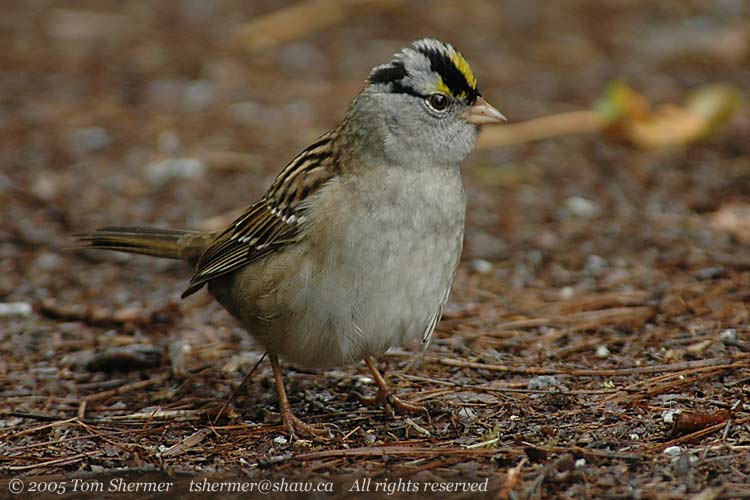 |
| And again,
with something juicy in his mouth. I don't know what the foodstuff
was, but all of the sparrows in the group were going after it. |
|
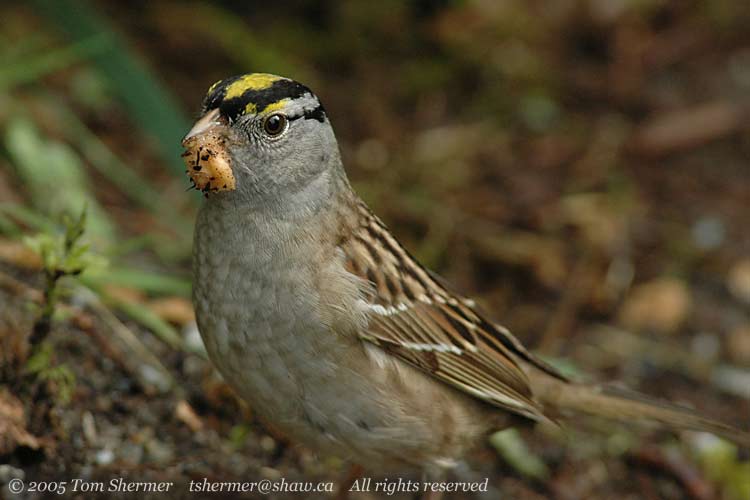 |
| Here's a
view of the top of his head. |
|
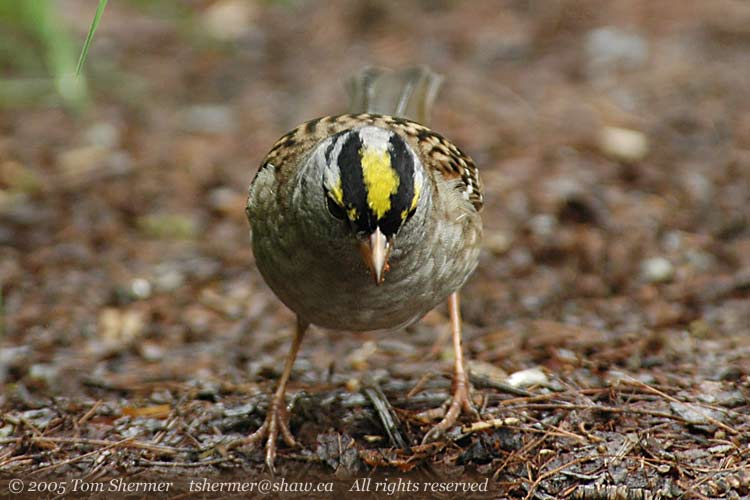 |
| Sometimes
when I'm out in the field, I get this strange feeling that I'm not
the only one trying to figure out the strange things that the unusual
creatures are doing. |
|
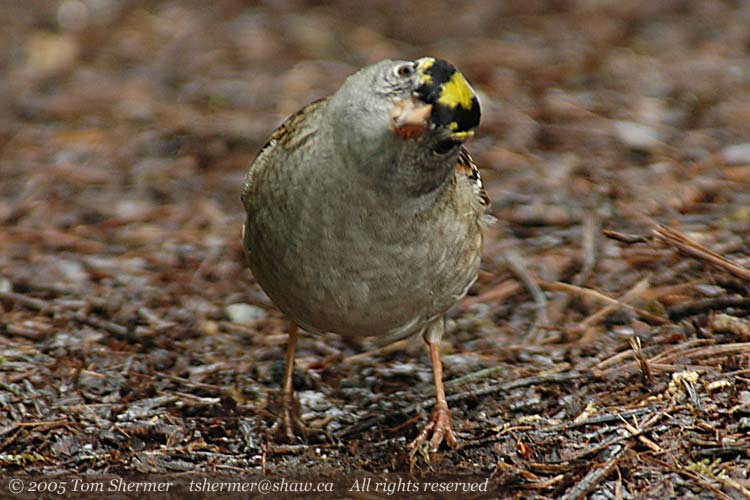 |
|
Well, hybrid sparrows
are a bit of a rarity and it was a real treat to have them there
and so accessible. I was happy that I dragged my should-be-resting
body out and got to spend some time with them.
I did go a little ways
down the nature dyke, just to see what was around. I found some
very droopy mushrooms on the side of a tree.
|
|
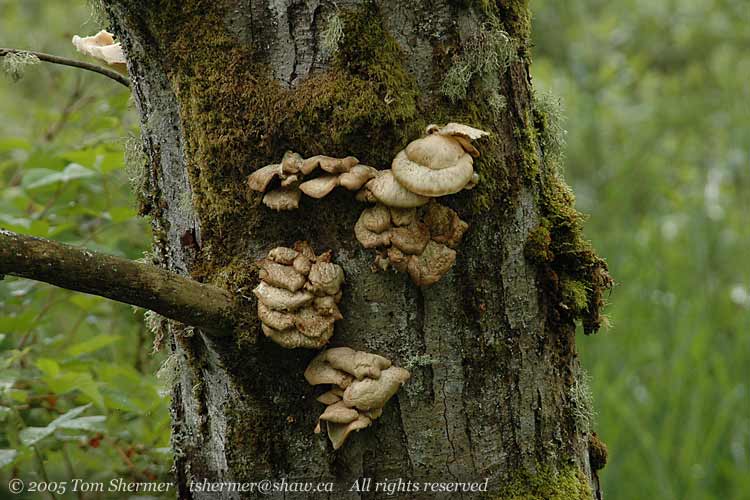 |
| I also found
a branch covered with this lichen. I'm pretty sure that this one
is in the genus Ramalina, and I think it's Ramalina farinacea.
It looks to me like the shredded cabbage that one sometimes finds
used as a garnish in restaurants. |
|
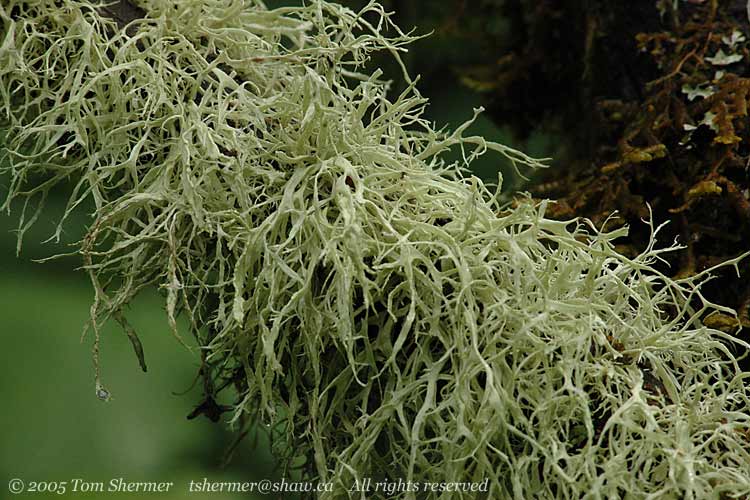 |
|
I turned back after
only going a short distance. On the way back, I did find a few
Yellow Warblers, like this guy I caught taking off.
|
|
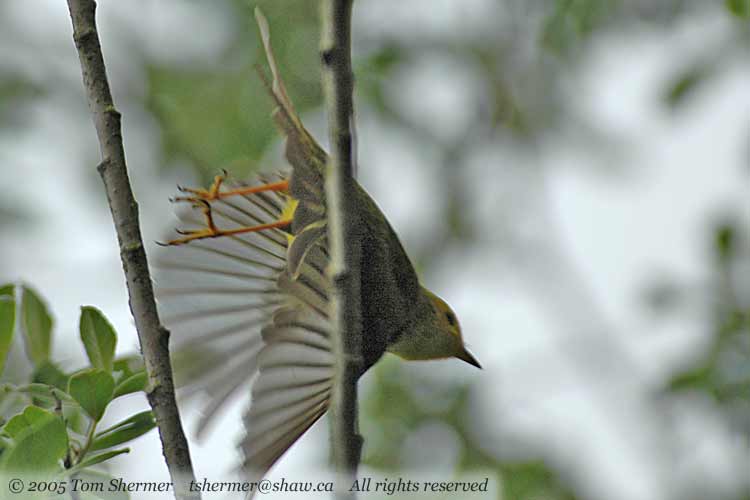 |
|
Back by the snack bar,
a female Rufous Hummingbird had come by to visit the feeder. Here
she is on a nearby branch.
|
|
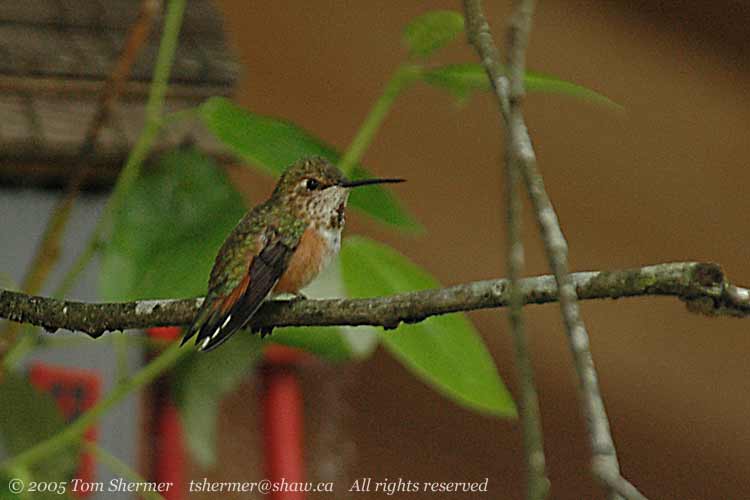 |
|
And here she is a little
later, at the feeder.
|
|
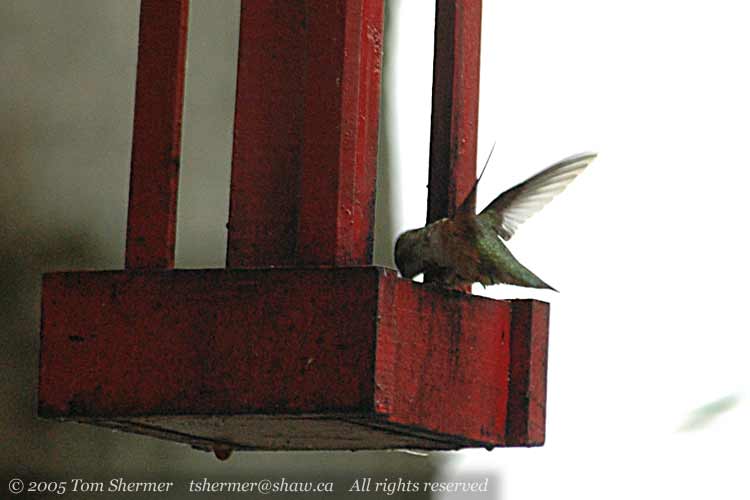 |
|
I had been out for
about three and a half hours, and I was pretty tired. I left the
park, but I still had a couple of sightings in store for me.
The first one occurred
a few klicks down the road at the Swan-e-Set golf course. There,
there were a pair of Sandhill Cranes grazing in the front yard.
|
|
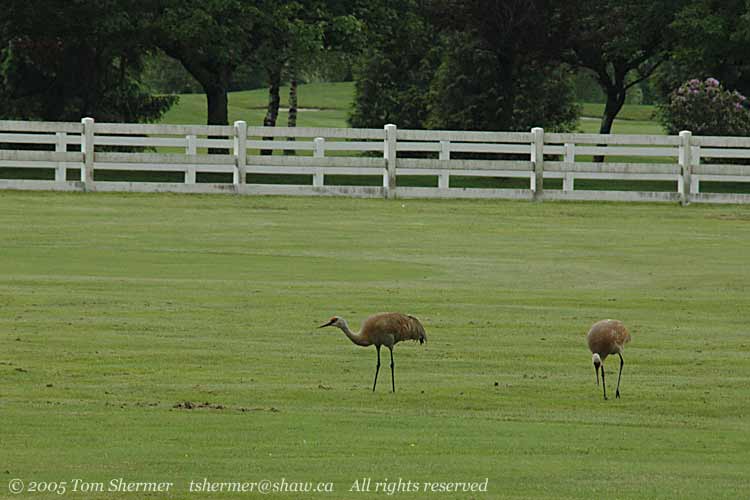 |
| Further
along, on Dewdney Trunk Road, I spotted a couple of big birds in
a tree. I found a place to pull over (Dewdney Trunk is a busy road
and there were water-filled ditches on both sides, so this was not
trivial) and took photos of them. As I was taking photos, one popped
his head up above his wings, and I caught a glint of red. Red on
the head could only mean one thing—I had just found my lifer
Turkey Vultures. Here's the one that showed his head. |
|
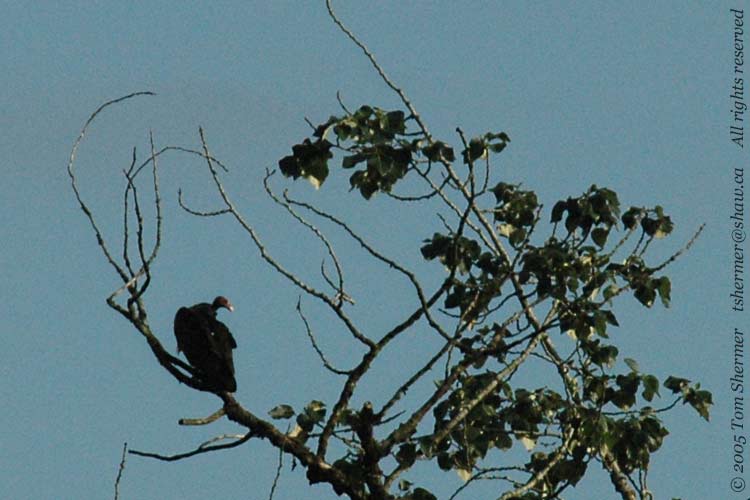 |
|
Well, I was beat, and
had maybe pushed myself further than I should have, but I had
had a great first venture back into the field, with lifer vultures
and hybrids.
Slowly and stiffly
chasin' them birdies,
Tom
|
|